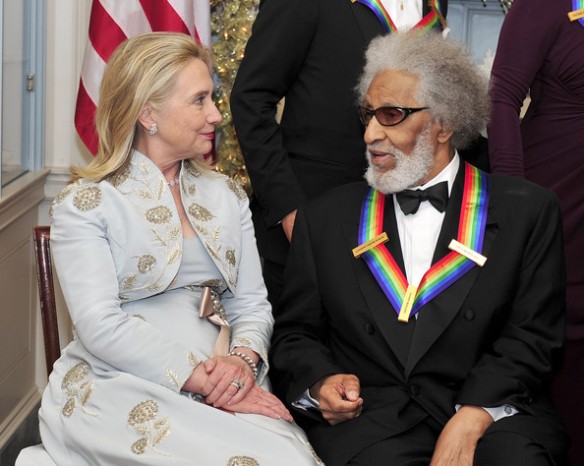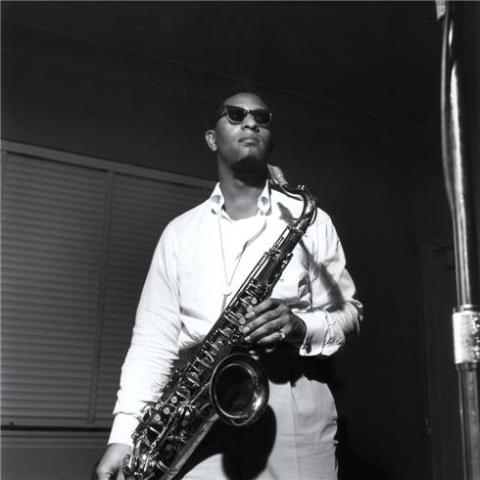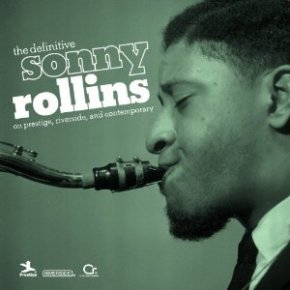The Lion In Winter: Sonny Rollins, the last best hope of Hard Bop
Sonny Rollins, who headlines this year’s Jacksonville Jazz Festival, was born in New York City on September 7, 1930. His arrival is a triumph for local jazz fans who’d lobbied for his inclusion for years, perhaps as long as the festival itself has been in existence. I know that, in my ongoing conversations on the subject of jazz with Bob Bednar, host of WJCT’s “This Is Jazz” program (and recently a member of the festival’s Hall of Fame), Rollins’ name was in circulation since the late-1990s. We’ve both mentioned his name repeatedly, not that doing so was necessarily necessary, due to his legend status—but, then again, it’s only happening in 2012, and we should consider ourselves lucky to have had the chance for so long.
In the years just after Charlie Parker’s premature death in 1955, Rollins emerged as the dominant new saxophone star of the jazz world. He was then a member of the great Clifford Brown-Max Roach Quintet, sharing the front-line with Clifford Brown, whose meteoric rise was halted by a 1956 car-wreck that also killed the group’s pianist, Richie Powell—whose older brother Bud Powell was in fact one of Rollins’ old employers. When Max Roach pushed through his grief to reemerge with a new band, just a few months later, Rollins was key to its sound. Max Roach + 4 found Rollins out-front with Kenny Dorham, one of the most underrated trumpeters ever, with Roach now taking unprecedented amounts of solo space; the Max Roach that most jazz fans think of today really began in 1956.
Rollins’ work on Roach’s seminal Jazz In ¾ Time helped cement the drummer’s place as a leading figure in the jazz mainstream, while adding further shine to Rollins’ reputation, which even then, in his 20s, was approaching mythic status. The years 1956-‘62 saw him cranking out a string of perfect records: Sonny Rollins+4, Newk’s Time, Tour de Force, etc. For the newcomer who wishes to hear the purest distillation of Sonny Rollins at his peak, one is advised to immediately get ahold of Live At the Village Vanguard. It was his first time recording in what would become, in time, his ideal setting—the trio.
Also, Tenor Madness featured a rare recorded meeting between Rollins and John Coltrane, who was also then beginning to get a serious push as well. Theirs was not a rivalry, so much as it was a case of two relentless perfectionists evolving on parallel tracks. Saxophone Colossus was the Rollins sound encapsulated; “Blue 7” features a solo by Roach that is a masterpiece of minimalism. Way Out West sees Rollins reinventing shopworn tunes of the Old West, while drummer Shelly Manne turns in one of his all-time finest efforts.
The Freedom Suite marks Rollins’ first experiments recording in a more expansive style, a form he’d return to often in later years. His trio includes Roach and bassist Oscar Pettiford, in one of his last major efforts before dying just a couple years later. It also led to a favorite musical curiosity: While waiting for Rollins to arrive at the studio, Roach and Pettiford jammed on the standard “There Will Never Be Another You”, which is 1) the high-point of Pettiford’s recorded legacy, 2) one of the greatest bass solos ever recorded in jazz, and 3) one of only a handful of recordings documenting Max Roach’s singular style when playing brushes.
Rollins returned from sabbatical with a new band built around the sumptuous harmonies of guitarist Jim Hall, who’d spent the previous period making key contributions to two of the most unique groups (in terms of their sound and approach to composition—Chico Hamilton’s quintet and the original Jimmy Giuffre Trio. The title-track of the group’s first record, The Bridge (1962), sounds exactly like what it is: a formal announcement that Sonny Rollins was back, and ready to reclaim a tenor crown that Coltrane effectively abdicated with his brilliant but polarizing excursions in the stellar regions of free jazz.
One of the true jewels in Rollins’ output, and one that doesn’t get enough attention, is his 1966 collaboration with master post-bop trumpeter Freddie Hubbard, East Broadway Rundown. The 20-minute title track evokes “The Freedom Suite” with its length—which wasn’t nearly as big a deal by then, just four years later; credit Coltrane for that—but the sound was completely different. Typically for Rollins, there is no piano; he probably became convinced of the value of this approach while working with Roach, who abandoned the piano chair entirely in ’58. This quartet also includes bassist Jimmy Garrison and drummer Elvin Jones, who were at that time also the backbone of Coltrane’s quartet—surely no coincidence. The sound is also reminiscent of Ornette Coleman’s quartet, circa Change Of the Century.
Incredibly, there may be many jazz festival fans for whom Sonny Rollins is actually an unfamiliar name. When dealing with a man who’s recorded at least 38 albums to date (not counting the copious live sets, bootlegs and sideman gigs), one may be challenged to find an appropriate jumping-in point. While any record makes for a good jumping-off point, the essence of Rollins’ artistry can be gleaned from an excellent double-disc set released by the Concord Music Group to commemorate his 80th birthday in 2010. The Definitive Sonny Rollins on Prestige, Riverside and Contemporary includes 21 of the key tracks recorded between 1951 and 1958, including “Blue 7”, “Tenor Madness” and “the Freedom Suite”.
Rollins’ most recent album is Road Shows, Vol. 2, released last September. Rollins has continued to record and tour into his ninth decade, winning three Grammys in the 21st century so far. For those of you who are truly newbies to Rollins’ music, there is no better place to start than the Main Branch of the Jacksonville Public Library, which has almost every major recording by or featuring Sonny Rollins; you can check out his entire career, fit it all into a canvas tote, and (if so inclined) load it all up onto your computer. It’s some of the best music ever made.
sheltonhull@gmail.com; April 16, 2012





I actually blog too and I’m crafting a thing
comparable to this specific post, “Jazz Festival Preview:
Sonny Rollins | Money Jungle Safari”. Will you
care in the event Iapply a bit of of your concepts? Thanks for
your effort -Amelie